






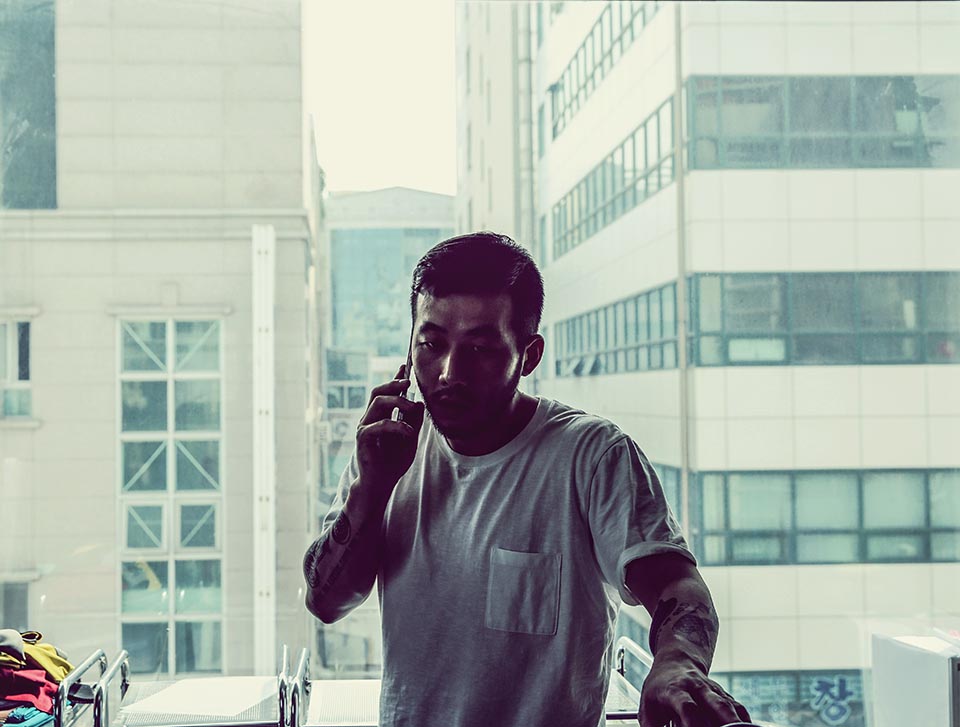
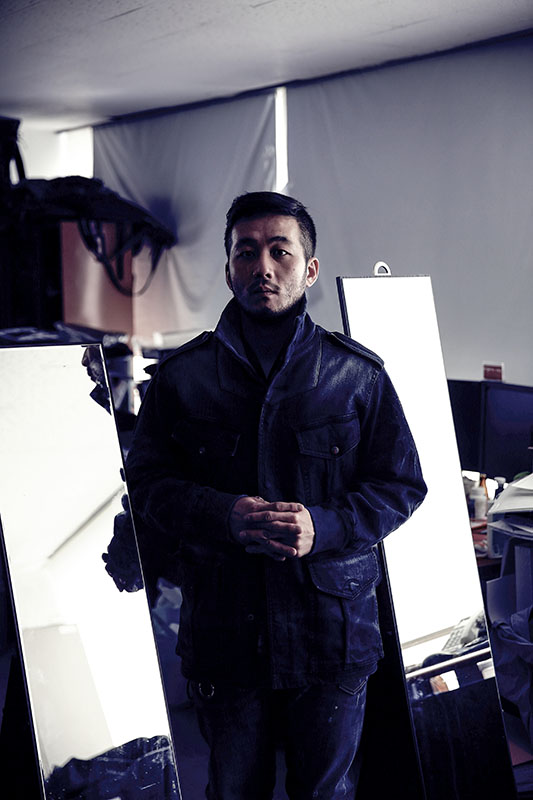
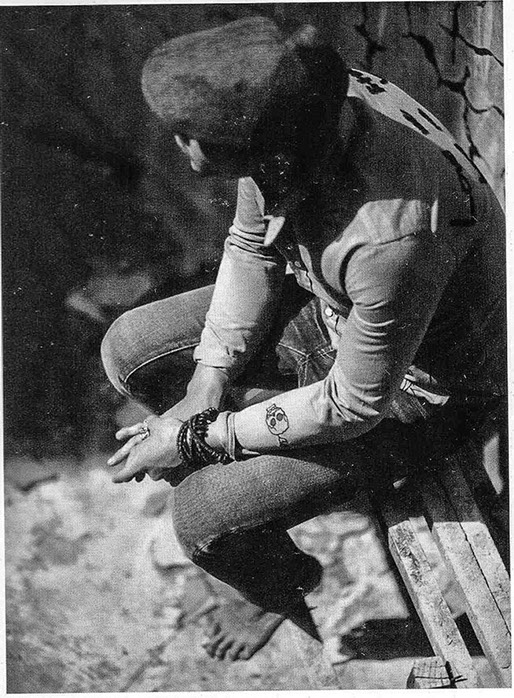
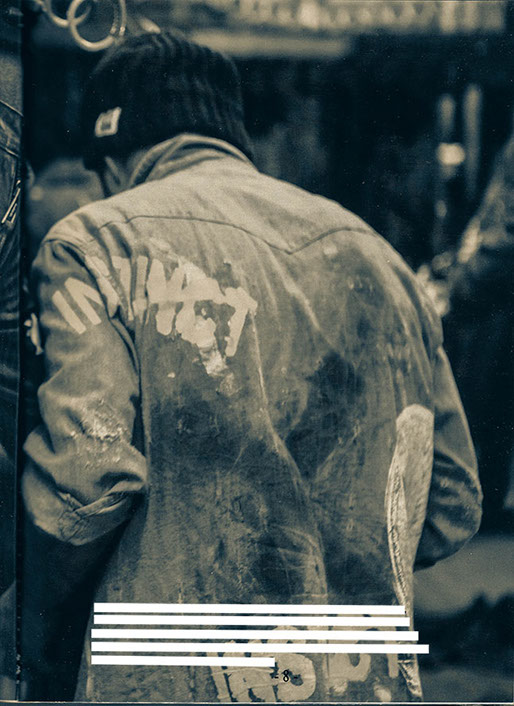
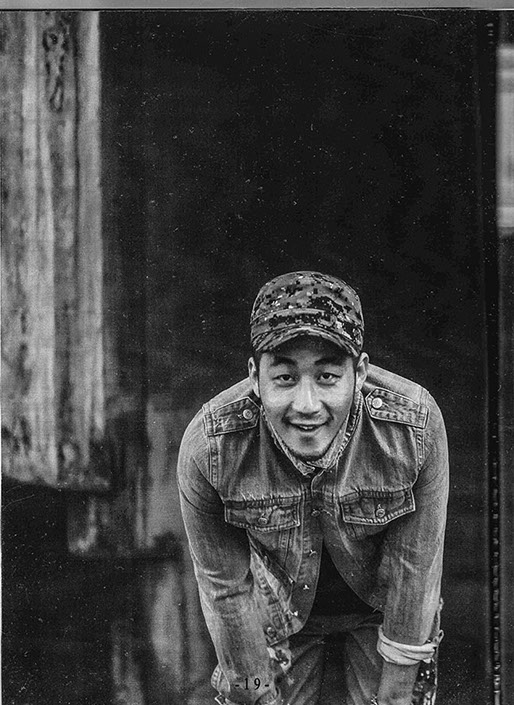
david yi
creative director (mar.2014 ~)
1)
My design is to imagine new things from deriving them from past experiences, past feelings and past ideas. Though the process of ideas, I can destroy ideas, and rebuild my ideas as I like. Though the process of washing, drying, dying and coloring the fabric, this is the happiest time for me as a designer.
When I think about fabric, my design flow is to blend together new ideas of matching new types of fabric together. I spontaneously match new ideas without letting the rationality of my reality to effect what I try. I try to match any type of fabric that can be worked together. While working on fabric, I like to use paint, and other forms of distressing methods. Spraying with a nozzle, I make sure to keep it at an even distance over the fabric for a unique look. Also distressing by hand, I work on fabrics with an even tempo by working the denim with my fingers. The effect that I get is similar to fabric that looks rough, faded from the sun or playing in the field.
As a designer, to imagine and create the outline or the course of my design was very enjoyable and I think that it is a wonderful thing for me to be a part of. Most of street brands these days are related with subculture. Therefore, they make the uniforms for bikers, rock stars, and these street brands influence the culture that influenced the designers. This exchange of culture and clothing helps me derive culture and an idea of what I want to make. As a designer, I never felt like it is a job or a profession, instead it is a passion project, where I can play with my ideas. As a designer, I get to dream about the sewing and fabric creation processes. For me, there is no beginning or end, but an artisan spirit which lives on and shown in my design.
3)
The fabric we use are from two main sources, Kuroki Okayama from Japan and Cone Mills from America. Cone Mills is famous for the development of Red Line Selvedge Denim for Levi's of San Francisco, CA. Both companies have a strong history in the denim arena, with over a 100 years of history for Levi's, and 50 years for Kuroki of Japan.
The two factories create denim in similar ways. Though the cleaning, washing, and dying of the yarn, it usually ends up with the desired effects. The indigo dyed cotton and the weaving looms do have consistencies and similar weight and fits which we are after.
Selvege Denim has been proudly produced by Cone mills since 1896 and at their White Oak plant since 1905. Their denims are still woven on a American Draper X3 fly shuttle looms starting in the 1940's. Fabrics woven which are on these vintage looms will contain a depth and dimension that is completely unique. The vintage aspect of these looms combined with the fact that these machines sit on the original turn of the century wood floors, creates a rhythm and motion that is uniquely woven into these fabrics. The loyal denim experts, some of whom have run these same machines for as many as 50 years, are committed to providing well crafted selvage fabrics, which combine our heritage with the latest advances in denim. From the original shuttle weaving process a small bobbin of yarn is carried inside a shuttle that travels back and forth across the loom. Since the yarn is not cut after each weft insertion, the tightly bound edge cannot unravel. If used as part of a garment, it will maintain its integrity throughout the life of the garment.
When talking about 'slubbiness' of denim is quite unusual and may not be the most exciting aspect of denim. usually most people would not bother to even notice this characteristic of it. But, slubbiness is part of the weight and fit of denim and jeans. To define slub in the textile industry, it is “a soft thick nub in yarn that is either an imperfection or purposely set for a desired effect”. When speaking in terms of denim it is when the denim manufacturer intentionally or accidentally causes irregularities in the yarn by means of knotting or twisting or using a mixture of different fiber lengths. The effect is an uneven, bumpy, hairy, and rough texture; making for even more raw denim.
All denim has its own place, and the machine has its own role, and their line of consistency disappears with time.
2)
Fading, we usually call this washing, and this process is always a natural, or not too artificial. Before starting this process the most important thing to me is how I want the fabric to end up. Do I want the fabrics and garments to be worn down naturally, or an artificial look that has the design of what I want to express. It is a difficult process of balancing the natural flow of worn down naturally, while adding in my personal touch. The process for wearing down and fading pants are quite easily, and can be done at a large scale, while t-shirts have to be done individually, and by hand. When manufacturing jeans or pants, it is easy to take a model and create fading and distressing, and in the design process it is much easier to replicate then when working on t-shirts or jackets. It is near impossible to create the same design and fade on each item, and there are errors and risks when creating. Because this is exponentially higher when doing t-shirts I can only rely on my own skill when manufacturing.
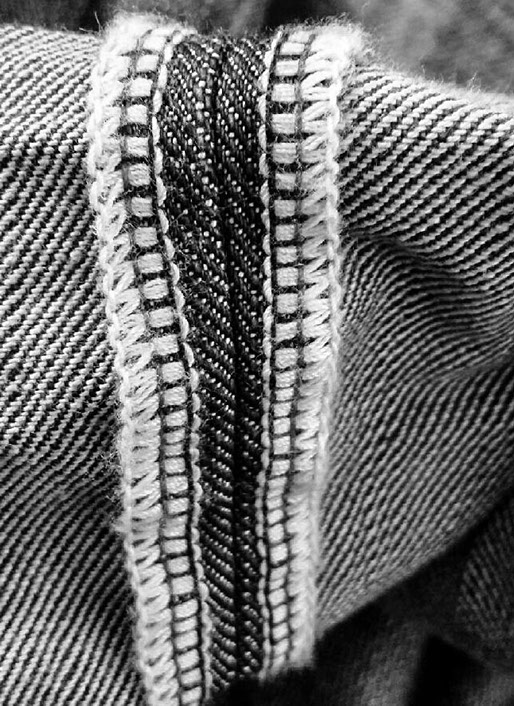
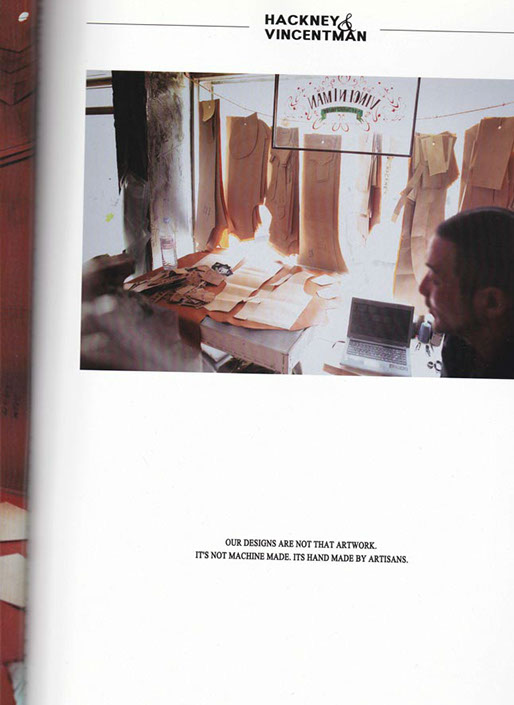






<
>
2014 ATLAX BOTLEIGHT CO.,LTD. ALL RIGHTS RESERVED.
COLLECTIONS
STREETUALIZED
information
DENIMISM
BRAIN WASH
HEART DAMAGED
SOUL PAINTING
STREETUALIZED
2014 F/W 'I NEVER CHEATED'
WINGMAN COLLECTION
OUTER
DENIM
SHIRTS
PANTS
BAG
COLLABORATION 'X KRAC'
MEN'S COLLECTION
WOMEN'S COLLECTION
products
ATLAX BOTLEIGHT
LEGAL ADVICE
JOBS
PRESS/PR
DIFFERENTIATION
THIS GROUP








